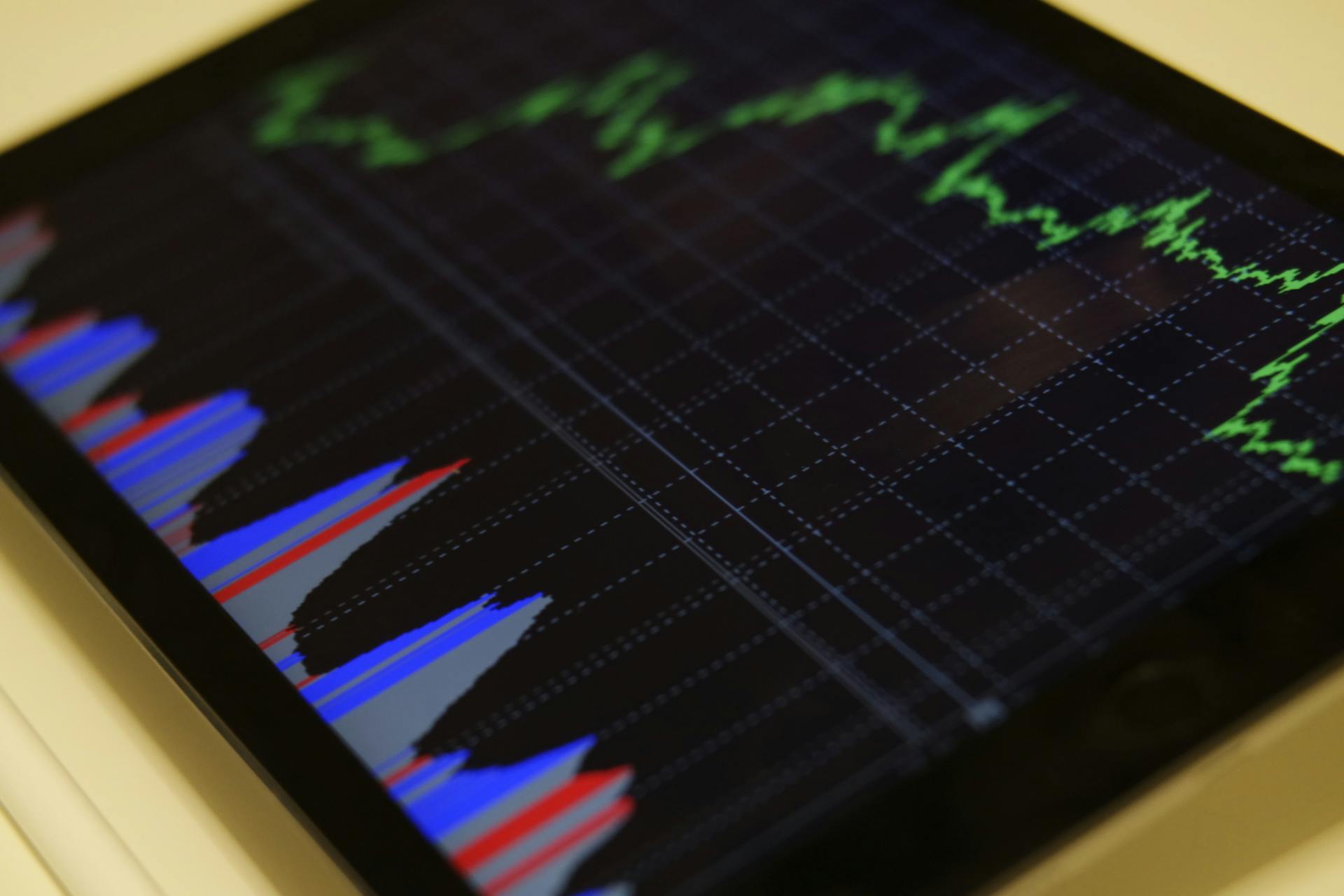For those venturing into the world of Forex trading, navigating the ever-shifting currency landscape can seem like a daunting task. However, amidst the seemingly chaotic fluctuations, valuable insights wait to be discovered. This is where Forex trading indicators come into play, acting as powerful tools to help analyze market trends, identify potential trading opportunities, and ultimately, make informed investment decisions. From technical indicators that analyze past price movements and trading volume to fundamental indicators that consider economic data and geopolitical events.
What are forex trading indicators?
Forex trading indicators are tools used by traders to analyze market conditions and make informed decisions about buying or selling currencies. These indicators are typically mathematical calculations based on historical price data, volume, or open interest. They help traders identify trends, momentum, and potential reversal points in the market.
These indicators come in various forms, ranging from simple moving averages to complex oscillators. Traders use them to interpret market behavior, forecast future price movements, and develop trading strategies. By understanding how to effectively use these indicators, traders can gain insights into market dynamics and improve their trading performance.
Types of Forex Trading Indicators
| Type of Indicator | Description | Examples |
| Trend Indicators | These indicators help identify the direction of the market trend. They are useful in trending markets where prices consistently move in one direction. | Moving averages, Bollinger Bands, Parabolic SAR |
| Oscillators | Oscillators help traders identify overbought or oversold conditions in the market. They are particularly useful in range-bound markets where prices fluctuate within a defined range. | Relative Strength Index (RSI), Stochastic Oscillator, Moving Average Convergence Divergence (MACD) |
| Volume Indicators | Volume indicators provide insights into the strength or weakness of price movements based on trading volume. They help confirm the validity of trends and identify potential reversals. | Chaikin Money Flow, On-Balance Volume (OBV), Accumulation/Distribution Line |
Forex trading indicators can be broadly categorized into three main types: trend indicators, oscillators, and volume indicators.
- Trend Indicators: These indicators help identify the direction of the market trend. They are useful in trending markets where prices consistently move in one direction. Common examples include moving averages, Bollinger Bands, and Parabolic SAR.
- Oscillators: Oscillators help traders identify overbought or oversold conditions in the market. They are particularly useful in range-bound markets where prices fluctuate within a defined range. Popular oscillators include the Relative Strength Index (RSI), Stochastic Oscillator, and Moving Average Convergence Divergence (MACD).
- Volume Indicators: Volume indicators provide insights into the strength or weakness of price movements based on trading volume. They help confirm the validity of trends and identify potential reversals. Examples of volume indicators include the Chaikin Money Flow, On-Balance Volume (OBV), and Accumulation/Distribution Line.
After listing the types of Forex trading indicators, it’s important to note that each type serves a specific purpose and can be valuable in different market conditions. Traders often use a combination of indicators to gain a comprehensive understanding of market dynamics and make well-informed trading decisions. By mastering the use of these indicators, traders can enhance their technical analysis skills and increase their chances of success in the Forex market.
Understanding Trend Indicators
Trend indicators play a crucial role in helping traders identify the direction of the market trend. They are particularly useful in trending markets where prices consistently move in one direction. Understanding how trend indicators work can significantly enhance a trader’s ability to identify potential entry and exit points in the market.
Moving Averages
Moving averages are one of the most commonly used trend indicators in Forex trading. They smooth out price data by creating a single flowing line that represents the average price over a specified period. Traders often use moving averages to identify the direction of the trend and to filter out noise from price fluctuations. Different types of moving averages, such as simple moving averages (SMA) and exponential moving averages (EMA), offer various insights into market trends.
Bollinger Bands
Bollinger Bands consist of a simple moving average line accompanied by two bands plotted above and below it. These bands represent volatility levels in the market. When the bands contract, it indicates low volatility, while widening bands suggest increasing volatility. Traders often use Bollinger Bands to identify potential reversal points when prices reach the upper or lower bands, as well as to gauge the strength of a trend. Understanding how to interpret Bollinger Bands can help traders make more informed decisions when trading Forex.
Exploring Oscillators
Oscillators are another category of Forex trading indicators that help traders identify overbought or oversold conditions in the market. They are particularly useful in range-bound markets where prices fluctuate within a defined range. Let’s explore some popular oscillators and how they are used by traders:
- Relative Strength Index (RSI): The Relative Strength Index (RSI) is a momentum oscillator that measures the speed and change of price movements. It oscillates between 0 and 100 and is typically used to identify overbought or oversold conditions in the market. Traders often look for divergences between price movements and RSI readings to anticipate potential reversals.
- Stochastic Oscillator: The Stochastic Oscillator is another momentum oscillator that compares the closing price of a security to its price range over a given period. It consists of two lines, %K and %D, which oscillate between 0 and 100. Traders use the Stochastic Oscillator to identify potential buy or sell signals when the %K line crosses above or below the %D line, indicating overbought or oversold conditions.
- Moving Average Convergence Divergence (MACD): The Moving Average Convergence Divergence (MACD) is a trend-following momentum indicator that shows the relationship between two moving averages of a security’s price. It consists of a MACD line and a signal line, along with a histogram representing the difference between the two lines. Traders use the MACD to identify changes in trend momentum and potential buy or sell signals.
Exploring these oscillators provides traders with valuable insights into market dynamics and helps them make more informed trading decisions in various market conditions.
Utilizing Volume Indicators
Volume indicators provide insights into the strength or weakness of price movements based on trading volume. They help confirm the validity of trends and identify potential reversals. Let’s delve into some popular volume indicators and how traders utilize them in their analysis:
- Chaikin Money Flow: Chaikin Money Flow is a volume indicator that measures the accumulation or distribution of money flow in a security over a specified period. It combines price and volume data to assess buying and selling pressure. Traders often use Chaikin Money Flow to confirm the strength of a trend. High readings suggest accumulation (buying pressure), while low readings indicate distribution (selling pressure).
- On-Balance Volume (OBV): On-Balance Volume (OBV) is a cumulative volume indicator that adds or subtracts volume based on whether prices closed higher or lower compared to the previous day. It helps traders assess the relationship between volume and price movements. Rising OBV suggests buying pressure, while falling OBV indicates selling pressure. Traders use OBV to confirm the strength of a trend and anticipate potential trend reversals.
- Accumulation/Distribution Line: The Accumulation/Distribution Line is a volume-based indicator that combines price and volume data to assess the flow of money in and out of a security. It calculates a cumulative value that increases with buying pressure and decreases with selling pressure. Traders use the Accumulation/Distribution Line to confirm the strength of a trend and identify potential reversals. Divergences between the indicator and price movements can signal upcoming trend changes.
By utilizing these volume indicators, traders can gain valuable insights into market dynamics and make more informed trading decisions. Understanding the relationship between volume and price movements is essential for accurately assessing market trends and identifying potential trading opportunities.

